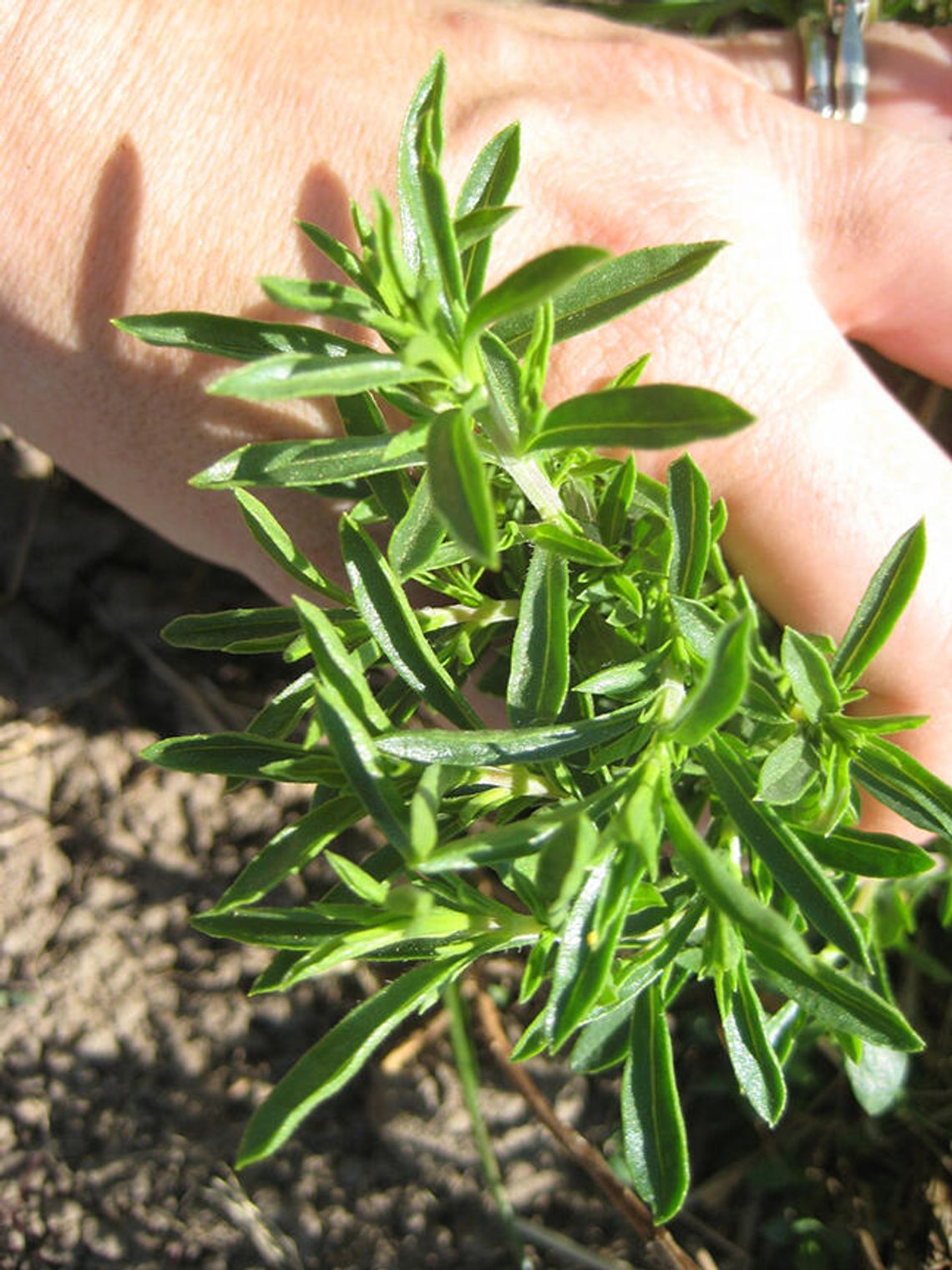Back when Diane “Princess Di” Winslow had her nursery It’s About Thyme up and running, she would sometimes get a little frustrated.
For decades she has lovingly cultivated winter savory plants to pass on to her nursery customers throughout the area, but for some reason, the buying public snubbed the herb.
If those same folks could have tasted a bowl of Di’s Great Northern beans (recipe below) flavored with winter savory, they would be sold.
Winter savory, AKA mountain savory, or white thyme (Satureja montana) is a xeric, perennial herb that is easily cultivated in Central Texas. Growing a foot tall on an evergreen mounding plant, it blooms summer to late summer with spikes of white to lilac flowers, with purple spots on the bottom lip, preferring a haircut after it blooms.
It requires full sun and needs excellent drainage, doing better in stony soil than rich beds. Winter savory is first cousin to summer savory and has a stronger flavor than its wimpy brethren (summer savory really hates growing in Central Texas heat), with a higher concentration of thymol and carvacol. The plant originated in Western and Central Asia, and is considered native to Southern Europe and the Mediterranean.
The genus Satureja was named by the Roman writer Pliny, and some folks feel it is derived from the word “satyr”, the half-man, half-goat Dionysiac woodland sprites in Roman mythology who chased maenids and bacchans.
There is a common etymological origin with the Turkish word sater, the Hebrew za’atar, and the Arabic az-za’tar, terms used today in the Eastern Mediterranean to describe different aromatic herbs or an herbal spice mix. The Romans used this herb for cooking and introduced it to Northern Europe during Caesar.
The glossy foliage is intensely aromatic, contributing an herbal, sharp, peppery flavor to dishes when added at the last minute, and mellowing-out the longer it is cooked. Historically it was used as a substitute for black pepper, and Hispanics use it when epazote can’t be found.
It is the ideal herb to add to a pot of beans (in German it is called bohnenkraut, which means “bean’s herb”), and it works well with meaty stews, or seafood breading. It pairs particularly well with any type of mushroom, in white sauces and vinaigrettes, and in potato salads.
Medicinally, it is said to be a remedy for colic and a cure for flatulence, and has been used to treat gastro-enteritis, cystitis, nausea, diarrhea, bronchial congestion, sore throat and menstrual disorders. It should not be used in medicinal doses by pregnant women.
Incredibly, a sprig of the plant, rubbed onto bee or wasp stings after the stinger is removed, brings instant relief. In the garden, it is the perfect companion plant for beans (repels bean weevils), and roses (reduces mildew and aphids).
Mick Vann is a cookbook author, food writer and blogger, restaurant consultant, recipe developer and horticulturist.










